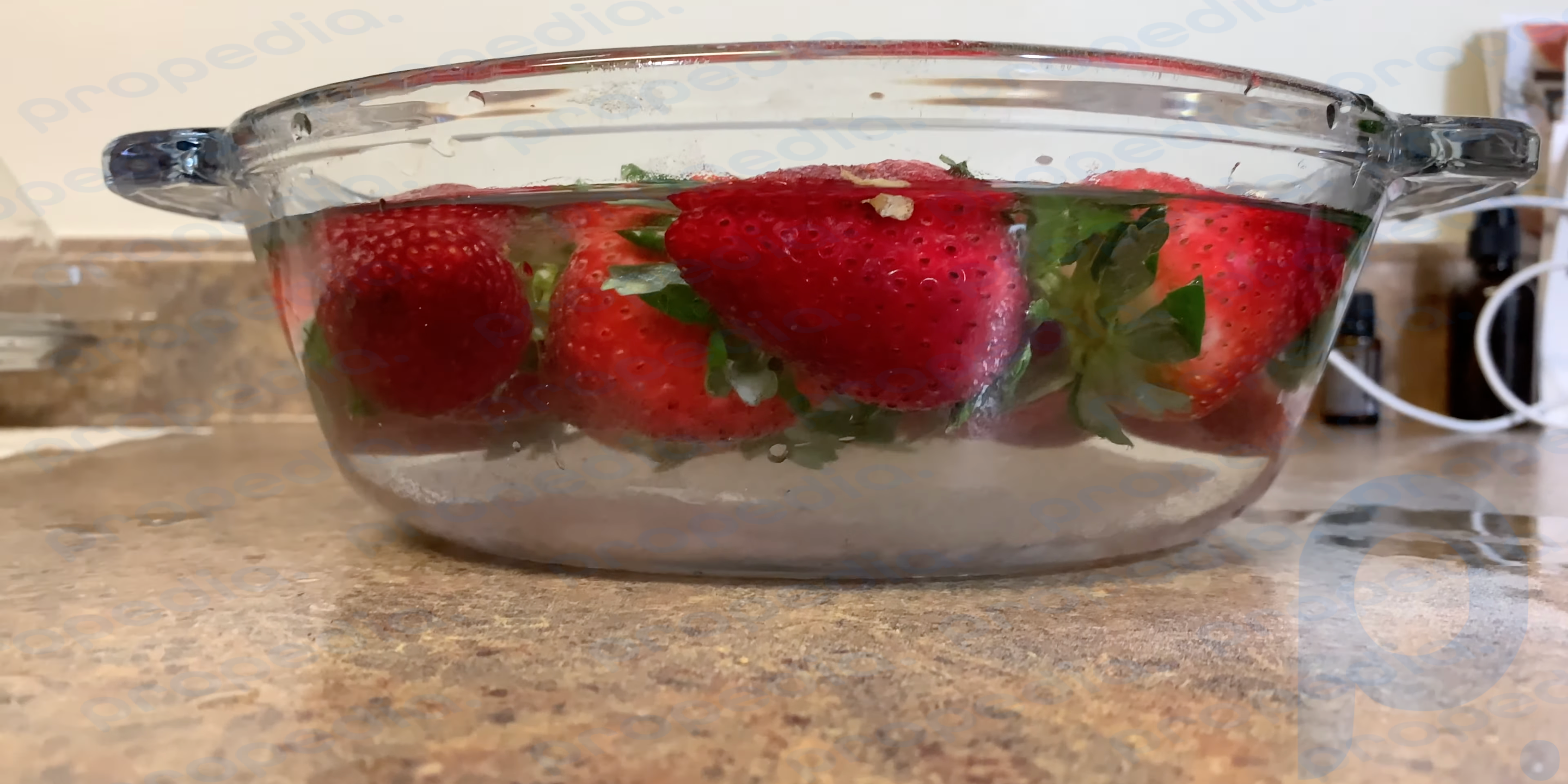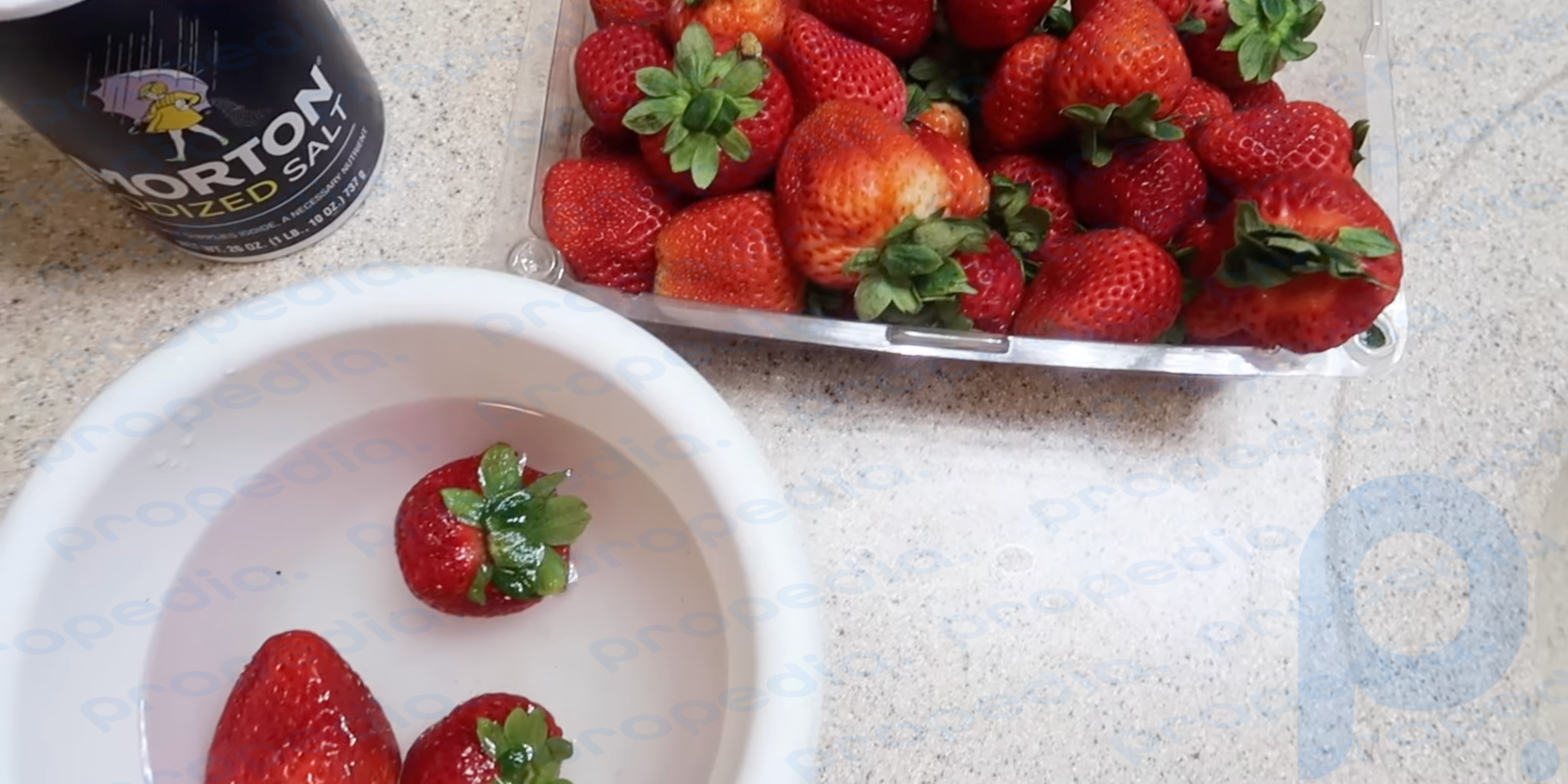In most cases, running water will suffice.
It is imperative to wash strawberries - it doesn’t matter whether they were picked in the garden, bought at the market or in a large supermarket. Even if the berry visually seems perfectly clean and shiny, some dangers simply cannot be noticed with the naked eye. Rospotrebnadzor specialists recommend using ordinary running water for washing strawberries - it is already enough to remove all major contaminants: traces of fertilizers, dust, soil, sand, wax, microbes.
To wash strawberries clean and not damage the berries, you need to follow several rules.
- Wash only as much as you intend to eat. Peeled strawberries have a shorter shelf life, even in the refrigerator and even after thorough drying. The fact is that this berry absorbs water well: after washing, there is more moisture in the pulp - the likelihood of rotting increases.
- Before washing, sort through the berries and remove any rotten ones. Even with a small affected area. Rotting indicates that the berry has begun to mold - mycotoxins (poisons of mold fungi) have already penetrated into all the pulp. It is recommended to eat such strawberries only after heat treatment. So if there are a lot of rotten berries, you can make jam or compote from them.
- Do not tear off the stem. Otherwise, the strawberries will absorb a lot of water during the washing process.
- Pre-clean your hands and dishes in which you wash berries. Otherwise, contaminants from them may get onto the strawberries.
- Use a colander. This way, dirty water will constantly drain without lingering at the bottom of the container and without enveloping the berries.
- Arrange strawberries in one layer. In a tightly packed colander, it will be difficult to thoroughly rinse all the berries.
- Keep the strawberries under water for 5-7 minutes. You should not open the tap to maximum - a powerful stream of water can damage the delicate skin of the berries. To remove contaminants, gently rinse the berries with your fingers. It is better not to use a brush here - again, because of the delicate skin of the strawberries.
- Dry the berries with a paper towel. This way there will definitely be no drops left on them, which can make the taste waterier.
You should not use dishwashing detergent or other household chemicals in the process. First, strawberries can absorb them. Secondly, the surface of the berry is not uniform - particles of detergent can get clogged in the recesses with seeds. As a result, there is a possibility of consuming some chemicals along with the sweet pulp that can cause poisoning.
If you don’t trust regular water, you’re worried that even low pressure will damage the berries during cleaning, or the strawberries seem very dirty, you can soak them for a while. Including with auxiliary means, but those that do not harm health.
What can you soak strawberries in?
Hot water
Pour water at a temperature of 43 to 54 ºC into a deep plate. Place strawberries in it for 30 seconds, during this time gently stir the berries so that dirt is removed more effectively. Then remove the strawberries, rinse under running water and dry gently with a paper towel.
Soda

It is believed that a soda solution can more effectively remove pesticide residues that may have been used on berries than pure water. To prepare the solution you will need 1 teaspoon of baking soda and 1 liter of water. Leave the strawberries in the liquid for about 5 minutes, then rinse and dry.
Vinegar
It can remove mold spores from the surface of strawberries. You should only experiment with fresh and healthy berries: if they already have rotten areas, vinegar will not help.
For soaking, you need a solution with a ratio of 1:4, for example, a glass of table vinegar or apple cider vinegar to four glasses of water. You need to put the berries in the resulting liquid for 20 minutes, and then rinse and dry them thoroughly. It is important to take into account the property of strawberries to absorb moisture well - after soaking in vinegar, they may become slightly sour.
Salt

This soak option went viral after trending on TikTok. Salt water supposedly helps to more effectively get rid of small insects, such as fruit fly larvae, that may have become embedded in the pulp. True, some experts doubt this property of the salt solution. And there is also the advisability of such soaking: the number of larvae or bugs that may be hiding inside the strawberries is not enough to cause any serious health consequences. Plus, like vinegar, salt can slightly change the flavor of the berries.
If you do decide to try this method, add a teaspoon of salt to 250 ml of water and stir until all the crystals disappear. Place the berries in the solution for 5 minutes. Finally, be sure to rinse the strawberries thoroughly under running water to remove as much salt and remaining contaminants as possible.

